Let us revisit the Navier-Stokes equations and the millennium problem (discussed in a previous post). The equations and additional conditions are
$$
\left\{
\begin{array}{l} \displaystyle
\rho_0 \left( \mathbf{u}_t + (\mathbf{u} \cdot \nabla)\mathbf{u} \right) – \mu \Delta\mathbf{u} + \nabla p = \rho_0 \, \mathbf{f},
\quad \nabla \cdot \mathbf{u} = 0
\\ \displaystyle
\mathbf{u}|_{t=0} = \mathbf{u}_0, \quad \mathbf{u} \to 0 \ \hbox{ cuando } |\mathbf{x}| \to +\infty.
\end{array}
\right.
$$
In this entry we will recall some contributions to the theoretical and numerical study produced over the years; we will try to put them in context and clarify their connections with the applications they motivate.
Ladýzhenskaya
Olga Aleksandrovna Ladýzhenskaya (1922-2004) was born in 1922 in Kologriv, Kostroma Governorate, where her father was a teacher of mathematics. He was deported, arrested, declared an enemy of the people, sentenced to death and executed by Stalin’s regime in 1937, when she was 15 years old.

As the daughter of an enemy of the people, Ladýzhenskaya had many problems in completing her education. Thus, in 1939, after excellent results in the entrance exams to the University of Leningrad, her application for admission was rejected. She was only able to gain admission four years later (thanks to the mediation of an acquaintance). Similarly, having completed her Doctoral Thesis in 1951, it was not until Stalin’s death in 1953 that she was able to defend. From then on, conditions improved and she was able to prove her tremendous worth as a researcher and science policy manager, heading the Mathematical Physics Laboratory of the Steklov Institute of Mathematics and the St. Petersburg Mathematical Society and as a member of the Russian Academy of Sciences.
She wrote more than 250 papers, covering a wide spectrum of topics: Fourier series and analysis, topological degree theory and its applications to fixed-point equations, ordinary and partial differential equations and their numerical approximation, etc. In particular, her contribution to the analysis of the Navier-Stokes equations was of enormous importance. For example, she was the first to realise the importance of the so-called Gagliardo-Nirenberg inequalities in the context of the existence and uniqueness of solution. The ideas she developed also opened up perspectives in fields as diverse as meteorology, aeronautics, oceanography and even medicine.
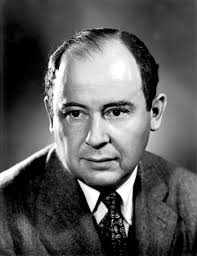
Quite possibly, she deserved to be awarded the Field Medal in 1958. But we would have to wait until 2014 to find a female laureate, the unfortunately deceased Iranian-born mathematician Maryam Mirzajani. To coincide with the centenary of her birth, the Russian National Committee of Mathematicians and the University of St Petersburg have founded a new prize in her honour, the Ladýzhenskaya Medal. It will be awarded for the first time in St. Petersburg, on the occasion of the International Congress of Mathematicians 2022.
Ladýzhenskaya was quite critical of the formulation of the millennium problem, see [1]. According to her, the equation should have been considered in \(\Omega \times \mathbf{R}_+\), with \(\Omega \subset \mathbf{R}^3\) a non-empty bounded connected open set (the domain occupied by the fluid), the condition of behaviour at infinity should have been changed by the equality \(\mathbf{u}(\mathbf{x},t) = 0\) for \(\mathbf{x} \in \partial\Omega\) and \(t > 0\) and the problem statement should have been the following: determine a space of right hand sides \(\mathbf{f}\) and a space of initial data \(\mathbf{u}_0\) leading to the existence and uniqueness of solution for all \(t > 0\). Unfortunately, we do not know an answer to this question either; in fact, we do not even know convincing reasons to suspect that such spaces exist.
Von Neumann, Von Kármán and “The Martians”
John von Neumann (1903-1957, originally János Lajos Neumann) was born in Budapest into a wealthy Jewish family. He studied at the Universities of Budapest, Berlin and Göttingen and at the Federal Institute of Technology in Zurich, which enabled him to attend lectures by Weyl, Pólya and Hilbert and to meet Einstein and Oppenheimer. From 1929 onwards, he alternated stays in Germany and the United States, but the arrival of the Nazis to power in 1933 led him to emigrate to the United States, where he obtained a position at the Institute for Advanced Study in Princeton.
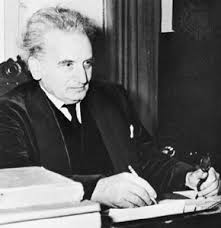
He is regarded as one of the most important mathematicians of the 20th century, with relevant contributions in many areas, including Game Theory, Computer Science and Numerical Analysis: he proved the existence of equilibria in games formulated under realistic conditions, with applications to the market; he also contributed with advances in Mathematical Logic; he introduced cellular automata and self-reproducing systems; he contributed to the conception and programming of effective algorithms; he developed calculation methods for solving differential equations, etc.
Von Neumann was involved, like so many other scientists, in the Manhattan Project, whose aim was to design and manufacture the first atomic bomb, based on the nuclear fission mechanism. This made him grow his interest in classical problems of fluid mechanics. Using techniques that are now well known but were then innovative, he managed to work out the stability theory appropriate to the numerical approach, to design efficient solving algorithms, to create an associated programming language and also to successfully run a computer for this purpose. The numerical tasks were carried out by the famous ENIAC (Electronic Numerical Integrator and Calculator), partially remodelled by him and later replaced by the EDVAC (Electronic Discrete Variable Automatic Computer). For these reasons, Von Neumann is remembered today as one of the fathers of computational fluid mechanics.
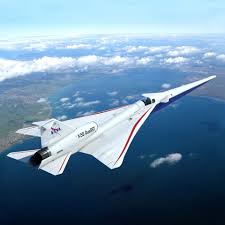
Von Neumann’s interests in this field did not stop there. Using actual numerical experiences, he was able to modify some of the classical methods, introduce others aimed at the calculation of eigenvalues, matrix inversion, optimisation of functions of several variables, and so on. Unfortunately, he died rather young, at the age of 54, before computers experienced the impressive growth of the 1960s and 1970s. Had he lived longer, he would undoubtedly have made an essential contribution to this breakthrough.
It is known that he was a very bad driver (frequently he was at the same time driving and reading a book), causing numerous accidents. In one of them, he humorously declared: “I was going along the road and the trees on the right were passing me in an orderly fashion, at 60 miles an hour. Suddenly one of them stopped in my way”. For more on his life and work, see [2].
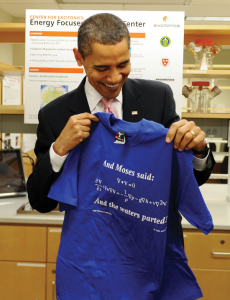
Theodore Kármán (1881-1963, originally Tódor Kármán) was also born in Budapest, also into a Jewish family. He studied at the Royal Joseph Technical University in Budapest and at the University of Göttingen and then worked at the RWTH Aachen Aeronautical Institute until 1930. In that year he moved to California as head of the Guggenheim Aeronautical Laboratory at the Institute of Technology.
Numerous advances in aerodynamics have been due to his work, particularly in the context of supersonic and hypersonic flows. Among many other achievements, his contributions led to the development of the first American jet-assisted aircraft, including spontaneously ignited liquid-fuelled rockets (a system later used in the Apollo programme). In 1958, Von Kármán was awarded an Honorary Doctorate by the University of Seville.
Having specialised in the behaviour of fluid flow around an airfoil, he was able to explain a multitude of observable phenomena. For example:
-
He established what is now known as the Kármán line. Loosely speaking, this is the boundary between the atmosphere and outer space, for the purposes of aviation and astronautics; in other words, we are talking about the height at which the density of the atmosphere becomes so low that the speed needed for an aircraft to achieve wing lift is equal to the orbital velocity. He calculated the line to be approximately 100 km above sea level.
-
In his honour, the region of a fluid downstream of an object where vortices are generated is called the Von Kármán vortex street. It is typical for vortices to periodically appear in this region, rotating in consecutive opposite directions. Many people believe that this phenomenon was once responsible for generating a periodic vertical force that eventually collapsed the Tacoma Bridge in 1940. But we will talk about this some other time, perhaps in a future post.

Both Von Neumann and Von Kármán belonged to a group of Hungarian scientists who emigrated to the United States in the first half of the 20th century. We also find there Paul Erdős, Paul Halmos, George Pólya, Leó Szilárd, Eugene Wigner and others. With a great sense of humour, the physicist Leó Szilárd, while discussing the existence of aliens with Fermi and referring to this group, once said: “The aliens are among us, but they call themselves Hungarians”.
Since then, they became known in scientific circles as “The Martians”. Apart from their origin, it helped that they all spoke English with a strong accent and communicated with each other in an incomprehensible language. For more details, see [3]; in fact, the author of this book found an “irrefutable proof” that these scientists did indeed come from far away: there are no known towns or streets in Hungary called Szilárd, Von Neumann or Von Kármán; but on the Moon there are craters bearing these names.
For demanding readers: modern-day attempts and more
At present, efforts are being made to advance in the understanding of the equations in several directions:

1. Finding the “best” spaces of initial data \(\mathbf{u}_0\) that ensure global existence when the data are small.
We could say that this path is inspired by Ladýzhenskaya’s ideas. In this area, it is worth noting a relatively recent result by Koch and Tataru which allows to identify a somewhat maximal space; on the other hand, there are spaces where the “smallness” of the initial data (which ensures existence and uniqueness of a global solution) is compatible with oscillations of arbitrary frequency; for details, see [4].
2. Let \(X\) be a “good” initial data space \(\mathbf{u}_0\) and let \(\mathcal{G} \subset X\) the family of data leading to global solutions. We know that \(\mathcal{G}\) is non-empty and in fact contains an environment of the origin. Naturally, one way to approximate the solution of the millennium problem is to say many things (the more the better) about this set.
According to a recent result, we know that \(\mathcal{G}\) is open and connected and that through each \(\mathbf{u}_0 \in \mathcal{G}\) passes an uncountable family of segments of arbitrary length contained in \(\mathcal{G}\) (and hence \(\mathcal{G}\) is not bounded); see [5]. Obviously, it would be of interest to know whether \(\mathcal{G}\) is dense.
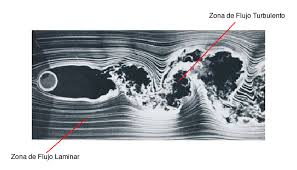
3. Analysis of the “regularity epochs”. It is known that the norm of the supremum in \(\mathbf{x}\) of a solution \(\mathbf{u}\) can “blow up” only in a small set of times. How can we estimate the size of this set? What does the chosen initial data tell us about it? An interesting study on this aspect of the equations can be found in [6].
4. Simplified models. Here, an attempt is made to go further in particular situations or in simpler models, where some terms or equations are eliminated and essential difficulties are retained. An example is provided by quasi-geostrophic fluids. The quasi-geostrophic system is
$$
\left\{
\begin{array}{l} \displaystyle
w_t + \mathbf{u} \cdot \nabla w + (-\Delta)^\gamma w = 0, \quad \mathbf{u} = \mathbf{S}w ,
\\ \displaystyle
w|_{t=0} = w_0, \quad w \to 0 \ \hbox{ cuando } |\mathbf{x}| \to +\infty ,
\end{array}
\right.
$$
where \(\gamma \in (0,1]\). The definition of \(\mathbf{S}\) is somewhat complex: \(\mathbf{S} := \mathbf{R}_0 \circ (-\Delta)^{-\alpha}\), where \(\mathbf{R}_0\) is the Riesz transform (the components of \(\mathbf{R}_0 z\) are spatial derivatives of the potential generated by the derivatives of \(z\)) and \(\alpha \in [0,1/2]\). According to the values of \(\gamma\) and \(\alpha\), similarities are found with the Navier-Stokes equations in dimension 2 and 3. The aim is to find out the techniques and arguments that work here in order to understand where are the difficulties in the original problem and, eventually, how they could be overcome. Results of this type have motivated, for example, the references [7, 8, 9].
5. Finally, extensions of the known results to other more complex models, incorporating possible additional properties of the fluid, are also sought. In this respect, let us point out two challenges (two open problems):
(a) For a fluid having variable density, it is not known how to prove the existence of admissible weak solution, nor the corresponding partial regularity results; the equations are
$$
\left\{
\begin{array}{l} \displaystyle
\rho(\mathbf{u}_t + (\mathbf{u} \cdot \nabla)\mathbf{u}) – \mu \Delta\mathbf{u} + \nabla p = \rho \, \mathbf{f},
\quad \nabla \cdot \mathbf{u} = 0,\\ \displaystyle
\rho_t + \mathbf{u} \cdot \nabla\rho = 0,\end{array}
\right.
$$
where the mass density \(\rho = \rho(\mathbf{x},t)\) is a new unknown.
(b) For a fluid where memory effects are important (e.g. the Oldroyd model), it is not even possible to prove the existence of a global weak solution in time. The so-called Oldroyd system is
$$
\left\{
\begin{array}{l} \displaystyle
\rho_0(\mathbf{u}_t + (\mathbf{u} \cdot \nabla)\mathbf{u}) – \mu \Delta\mathbf{u} + \nabla p
= \rho_0 \nabla \cdot \tau,
\quad \nabla \cdot \mathbf{u} = 0,
\\ \displaystyle
\tau_t + (\mathbf{u} \cdot \nabla) \tau + g(\nabla\mathbf{u},\tau) + a \tau = b (\nabla\mathbf{u} + \nabla\mathbf{u}^t).
\end{array}
\right.
$$
Here, \(a, b > 0\), \(\tau = \tau(\mathbf{x},t)\) is a new unknown (a function with values in the space of the symmetric matrices \(3 \times 3\) that provides information about the elastic forces that some particles exert on others) and \(g(\nabla\mathbf{u},\tau)\) is a bilinear expression in \(\nabla\mathbf{u}\) and \(\tau\). For further information, see for example [10, 11, 12].
There are many more things we would like to know about the Navier-Stokes equations that are only half understood.
Thus, the concept of admissible weak solution was introduced with the intention of restricting the class of weak solutions to a subfamily where uniqueness could be proved. However, this has not been achieved. It is known how to prove non-uniqueness in a larger family of solutions, see [13], although the physical meaning of this result is not clear.
On the other hand, since Von Neumann’s time, numerical approximation has given rise to hundreds of different methods, motivated by specific problems of interest. For example, we can speak of mixed finite elements in space combined with alternating directions in time and Newton or quasi-Newton methods for stationary nonlinear problems; see [14].
Unfortunately, when the quotient \(\mu/\rho_0\) is very small, the solutions have turbulent behaviour: they experience high-frequency space-time oscillations and reliable numerical approximations have to be given up. Consequently, it is necessary to “average” the equations beforehand, approximate some of the averaged terms and solve the resulting system (the Reynolds equations); see [15]. But all this goes beyond the subject that brings us here and will be dealt with in a future post.
References
- O.A. Ladyzhenskaya, Russian Math. Surveys 58:2 251–286 (2003).
- M. López-Pellicer, Rev. R. Acad. Cienc. Exact. Fís. Nat. (Esp), Vol. 100, No. 1, pp. 1-12, 2006.
- G. Marx, The voice of the Martians, Akadémiai Kiadó, Budapest, 2001.
- H. Koch, D. Tataru, Adv. Math. 157 (2001), no. 1, 22-35.
- J.-Y. Chemin, I. Gallagher, P. Zhang, Comm. Partial Differential Equations 44 (2019), no. 12, 1387-1405.
- J.C. Robinson, J.L. Rodrigo, W. Sadowski, The three-dimensional Navier-Stokes equations. Classical theory, Cambridge Studies in Advanced Mathematics, 157. Cambridge University Press, Cambridge, 2016.
- D. Chae, P. Constantin, D. Córdoba, F. Gancedo, J. Wu, Comm. Pure Appl. Math. 65 (2012), no. 8, 1037-1066.
- Z. Zhang, Comput. Math. Appl. 75 (2018), no. 3, 1038-1043.
- T. Buckmaster, A. Nahmod, G. Staffilani, K. Widmayer, Klaus, Int. Math. Res. Not. IMRN 2020, no. 23, 9370-9385.
- P.-L. Lions, Mathematical topics in fluid mechanics. Vol. 1. Incompressible models, Oxford Lecture Series in Mathematics and its Applications 3, The Clarendon Press, Oxford University Press, New York, 1996.
- E. Fernández-Cara, F. Guillén, R.R. Ortega, Handbook of numerical analysis, Vol. VIII, 543–661, Amsterdam, 2002.
- F. Irgens, Rheology and non-Newtonian fluids, Springer, Cham, 2014.
- T. Buckmaster, V. Vicol, Ann. of Math. (2), Vol. 189 (2019), p. 101-144.
- R. Glowinski, Numerical methods for nonlinear variational problems. Reprint of the 1984 original. Scientific Computation. Springer-Verlag, Berlin, 2008.
- T. Chacón, R. Lewandowski, Mathematical and Numerical Foundations of Turbulence Models and Applications, Nueva York. Birkhauser (De Gruyter). 2014.

Leave a Reply